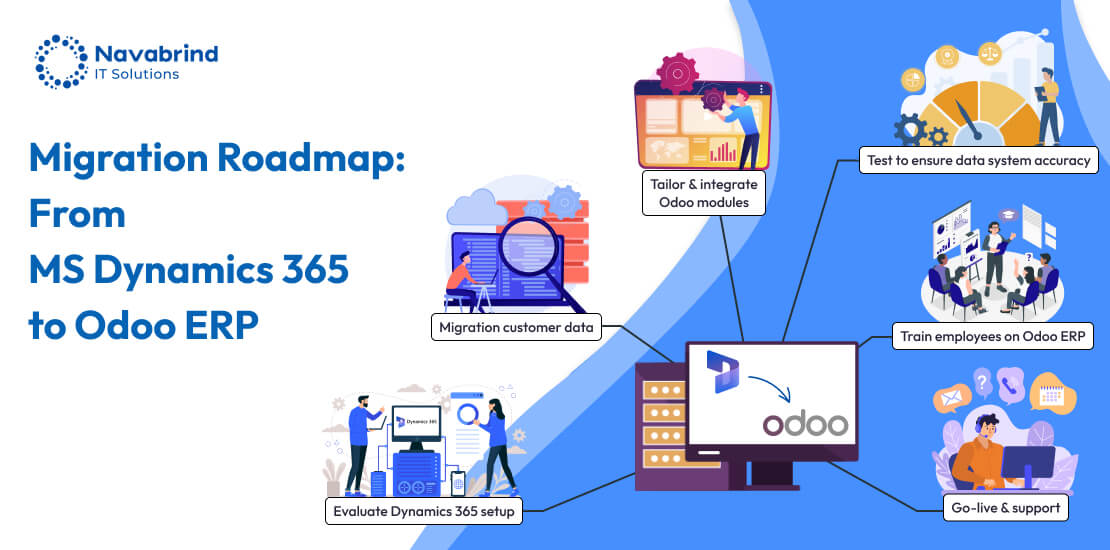The Role of E-commerce in Streamlining Supply Chain Management for Manufacturers
- November 13, 2024
- Posted by:
- Category: Uncategorized
Supply chain management is an essential process for manufacturers, as it involves coordinating the flow of goods and services from raw materials to the final product.
With the rise of e-commerce, supply chain management has become more efficient, cost-effective, and streamlined.
In this article, we will explore the role of e-commerce in supply chain management for manufacturers and how it has transformed the industry.
The Benefits of E-commerce in Supply Chain Management
With the integration of e-commerce into supply chain management, manufacturers can improve their operations in several ways
Increased Visibility and Control:
One of the primary benefits of e-commerce in supply chain management for manufacturers is increased visibility and control.
With the use of e-commerce, manufacturers can track their products throughout the supply chain, from raw materials to finished goods.
This level of visibility allows manufacturers to identify bottlenecks, reduce delays, and optimize the supply chain for efficiency.
Streamlined Procurement:
E-commerce has also streamlined procurement for manufacturers.
With the use of online portals, manufacturers can quickly and easily source the materials they need from a wide range of suppliers.
This not only saves time but also allows manufacturers to find the best prices and quality for their materials.
Improved Efficiency:
E-commerce has also improved the efficiency of manufacturing operations.
By automating processes, such as order processing, inventory management, and shipping, manufacturers can reduce the time and resources required to manage their supply chain.
This, in turn, allows them to operate more efficiently and reduce costs.
Reduced Costs:
By automating processes, manufacturers can reduce the number of people required to manage the supply chain, which reduces labor costs.
E-commerce also reduces the need for physical storage space, as products can be stored and shipped directly from the manufacturer.
Additionally, e-commerce allows manufacturers to optimize their supply chain for efficiency, which reduces transportation costs.
Improved Collaboration:
With online portals and communication tools, manufacturers can share information with suppliers in real-time.
This level of collaboration allows for faster decision-making, improved problem-solving, and better coordination throughout the supply chain.
Enhanced Data Analytics:
E-commerce has also enhanced data analytics capabilities in supply chain management for manufacturers.
By tracking the movement of products throughout the supply chain, manufacturers can collect valuable data that can be used to improve operations.
This data can be used to identify trends, optimize inventory levels, and forecast demand, which can improve the efficiency and effectiveness of the supply chain.
Increased Sales:
With the use of e-commerce, manufacturers can sell their products to customers around the world, which increases their customer base and revenue potential.
This global reach also allows manufacturers to source materials from a wider range of suppliers, which can improve the quality and diversity of their product offerings.
E-commerce Tools for Supply Chain Management
As the world becomes increasingly digital, the use of e-commerce tools in supply chain management has become essential for manufacturers.
By leveraging these tools, manufacturers can streamline their supply chain operations, reduce costs, and improve customer satisfaction.
Enterprise Resource Planning (ERP) Systems:
ERP systems are software platforms that integrate various business processes, including supply chain management, finance, and human resources, into a single platform.
This helps manufacturers manage their supply chain operations more efficiently by providing real-time visibility into inventory levels, order statuses, and production schedules.
ERP systems also provide manufacturers with data analytics tools that enable them to make data-driven decisions and optimize their supply chain operations.
Electronic Data Interchange (EDI):
EDI is a standard format for exchanging electronic documents such as purchase orders, invoices, and shipment notifications between different parties in the supply chain.
This helps manufacturers streamline their communication and reduce errors in data entry.
EDI also enables manufacturers to automate their supply chain processes, reducing the need for manual data entry and improving order fulfillment times.
Radio Frequency Identification (RFID):
RFID uses radio waves to track the movement of goods and assets in the supply chain.
This helps manufacturers improve inventory management, reduce stockouts, and improve order fulfillment times.
RFID tags can be attached to individual products or packaging, allowing manufacturers to track products in real-time as they move through the supply chain.
RFID technology is also used in warehouses to improve picking accuracy and reduce the time it takes to locate products.
Vendor Managed Inventory (VMI):
VMI is a system where suppliers manage the inventory of their products at the manufacturer’s location.
This helps manufacturers reduce inventory carrying costs, improve order fulfillment times, and optimize stock levels.
By giving suppliers access to real-time inventory data, manufacturers can ensure that they always have the right amount of inventory on hand to meet customer demand.
You can also read our blog post, List of Must-Have Skills for E-commerce Business Owners>>
E-commerce Strategies for Streamlining Supply Chain Management
Manufacturers can implement several e-commerce strategies to streamline their supply chain management processes, including:
Collaborative Planning, Forecasting, and Replenishment (CPFR)
Collaborative Planning, Forecasting, and Replenishment (CPFR) is an e-commerce strategy that involves sharing sales data, demand forecasts, and inventory levels between different parties in the supply chain.
CPFR helps manufacturers to optimize their inventory levels, reduce stockouts, and improve order fulfillment times.
By sharing information with their suppliers and customers, manufacturers can improve their forecasting accuracy, which leads to better inventory planning and reduced carrying costs.
Moreover, by collaborating with suppliers and customers, manufacturers can improve their product availability, reduce out-of-stock situations, and improve their customer satisfaction levels.
Drop-shipping
Drop-shipping is an e-commerce strategy that involves shipping products directly from the supplier to the end customer, bypassing the manufacturer’s warehouse.
Drop-shipping helps manufacturers to reduce inventory carrying costs and improve order fulfillment times.
By outsourcing their fulfillment operations to third-party logistics providers, manufacturers can avoid the costs associated with maintaining their warehouses, such as rent, utilities, and labor.
Moreover, by leveraging the expertise of their logistics partners, manufacturers can improve their fulfillment times and reduce their shipping costs.
Just-in-Time (JIT) Inventory Management
Just-in-Time (JIT) Inventory Management is an e-commerce strategy that involves manufacturing or delivering products just in time to meet customer demand.
JIT helps manufacturers to reduce inventory carrying costs, improve order fulfillment times, and optimize stock levels.
By manufacturing or delivering products only when there is demand for them, manufacturers can avoid the costs associated with overproduction, excess inventory, and stockouts.
Moreover, by aligning their production and delivery schedules with their customers’ demand patterns, manufacturers can improve their customer satisfaction levels and reduce their order lead times.
Direct-to-Consumer (DTC) Sales
Direct-to-Consumer (DTC) Sales is an e-commerce strategy that involves selling products directly to customers through e-commerce channels, bypassing traditional retail stores.
DTC sales help manufacturers to reduce overhead costs, increase profit margins, and gain better control over their supply chain.
By selling products directly to customers, manufacturers can eliminate the costs associated with intermediaries such as distributors, wholesalers, and retailers.
Moreover, by leveraging their e-commerce channels, manufacturers can gain valuable insights into their customers’ preferences, behavior, and feedback, which can help them to improve their products, services, and marketing campaigns.
Challenges and Solutions in E-commerce Supply Chain Management
Despite the many benefits of e-commerce in supply chain management, there are also challenges that manufacturers may face. Some of these challenges include:
Data Integration and Management
Integrating data from different sources and managing it can be a significant challenge for manufacturers.
Accurate data management is essential for effective decision-making and efficient supply chain management.
Manufacturers need to invest in reliable software solutions and have dedicated personnel to ensure accurate data management.
By utilizing reliable software solutions, manufacturers can easily integrate data from various sources, making it easier to analyze and make informed decisions.
Cybersecurity
E-commerce platforms and supply chain systems are vulnerable to cyber-attacks.
These attacks can result in significant financial losses and reputational damage.
Manufacturers need to implement robust security measures to protect their data and systems from unauthorized access.
This can include the implementation of firewalls, intrusion detection and prevention systems, and multi-factor authentication protocols.
Manufacturers should also provide regular training for their employees to ensure they are aware of potential cybersecurity threats and how to avoid them.
Logistics and Delivery
Managing logistics and delivery operations can be challenging, especially for manufacturers who do not have experience in this area.
Manufacturers need to partner with reliable logistics and delivery service providers to ensure on-time and efficient delivery.
By partnering with reliable service providers, manufacturers can avoid delays, damaged products, and other logistical challenges.
Additionally, manufacturers can leverage advanced tracking technologies to ensure full visibility of their products during the delivery process.
Regulatory Compliance
E-commerce and supply chain management are subject to various regulations and standards.
Manufacturers need to ensure that they comply with these regulations to avoid legal and financial penalties.
This includes adhering to data privacy regulations, labor laws, and environmental standards.
To overcome this challenge, manufacturers should invest in dedicated compliance personnel and seek guidance from legal experts to ensure they comply with relevant regulations.
Conclusion
E-commerce has transformed supply chain management for manufacturers, enabling them to streamline their operations, reduce costs, and improve efficiency.
By leveraging e-commerce tools and implementing effective strategies, manufacturers can optimize their supply chain and gain a competitive edge in the market.
However, manufacturers need to be aware of the challenges that come with e-commerce and take proactive measures to mitigate them.
With the right approach, e-commerce can be a powerful tool for manufacturers to achieve supply chain success.
Related Articles
- Post
A Business Case for Hiring Dedicated Salesforce Developers
A Business Case for Hiring Dedicated Salesforce Developers March 21, 2025 Posted by: Tony Stark Categories: Blog, Hire a Developer, Odoo No Comments The Growing Need for Salesforce Development Services Salesforce has established itself as the world’s leading CRM, empowering businesses of all sizes to streamline customer interactions and improve sales processes. However, to experience - Post
ERP Migration from MS Dynamics 365 Business Central to Odoo
ERP Migration from MS Dynamics 365 Business Central to Odoo March 19, 2025 Posted by: adminuser Categories: Blog, ERP Migration, Odoo No Comments Migrating from Microsoft Dynamics 365 Business Central to Odoo ERP Solutions is a strategic move for businesses seeking flexibility, cost efficiency, and seamless integration. While MS Dynamics is a powerful ERP, many
How can we help you?
Get in touch with a solutions consultant that can share best practices and help solve specific challenges.






